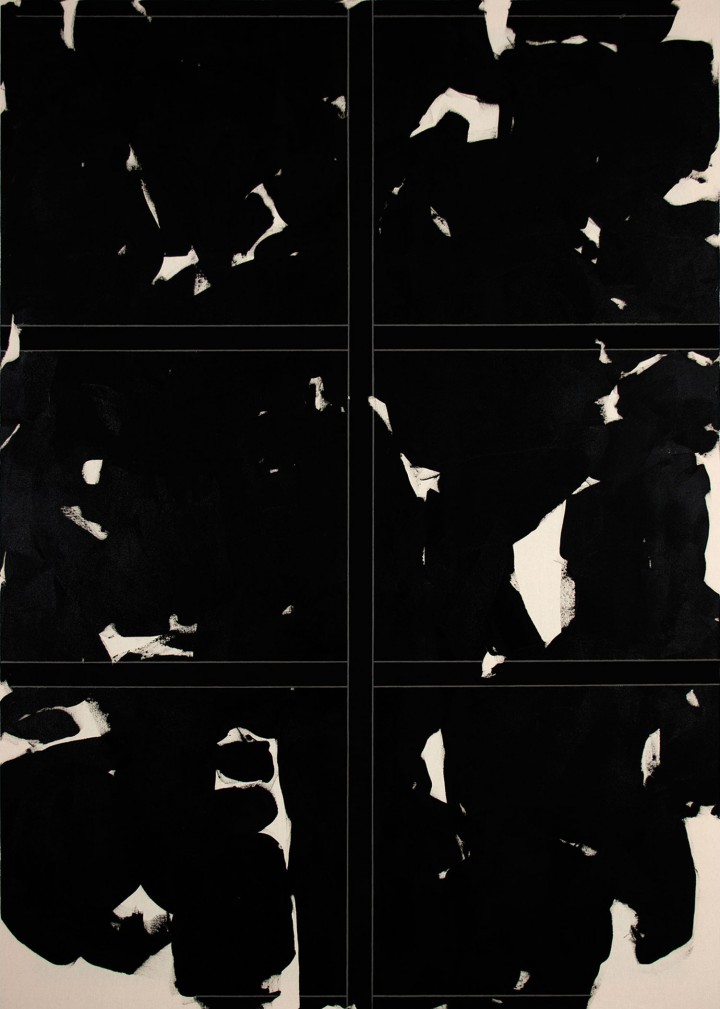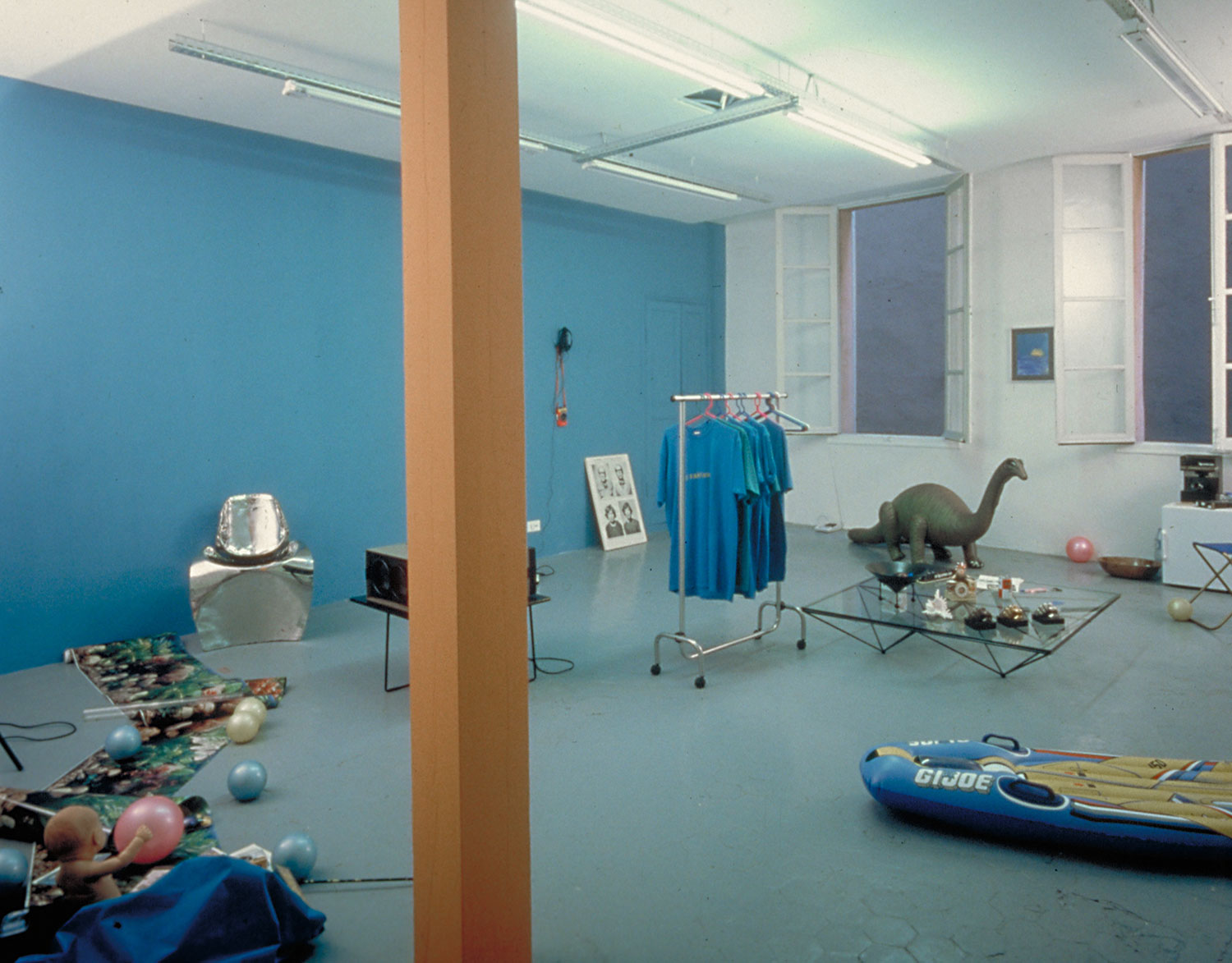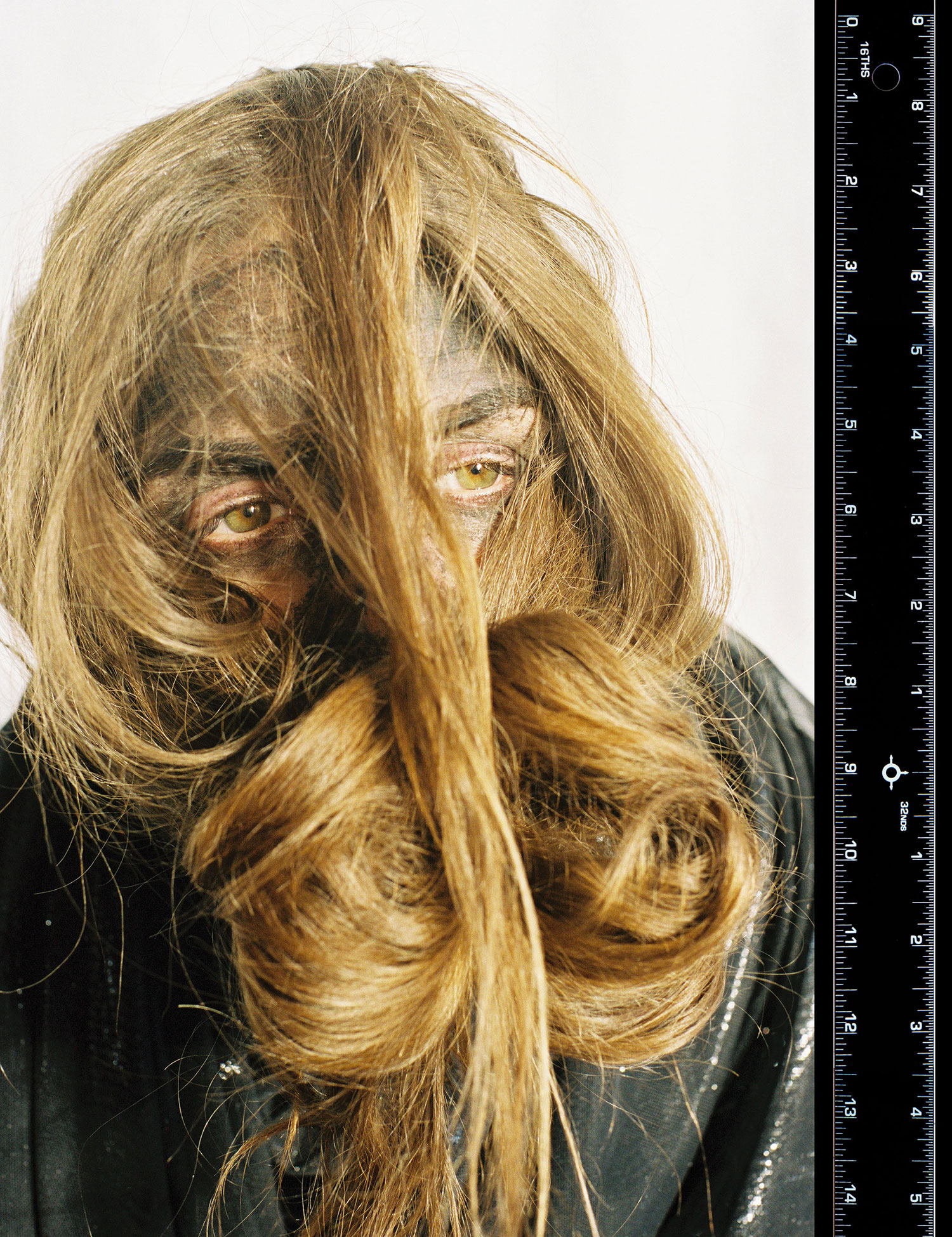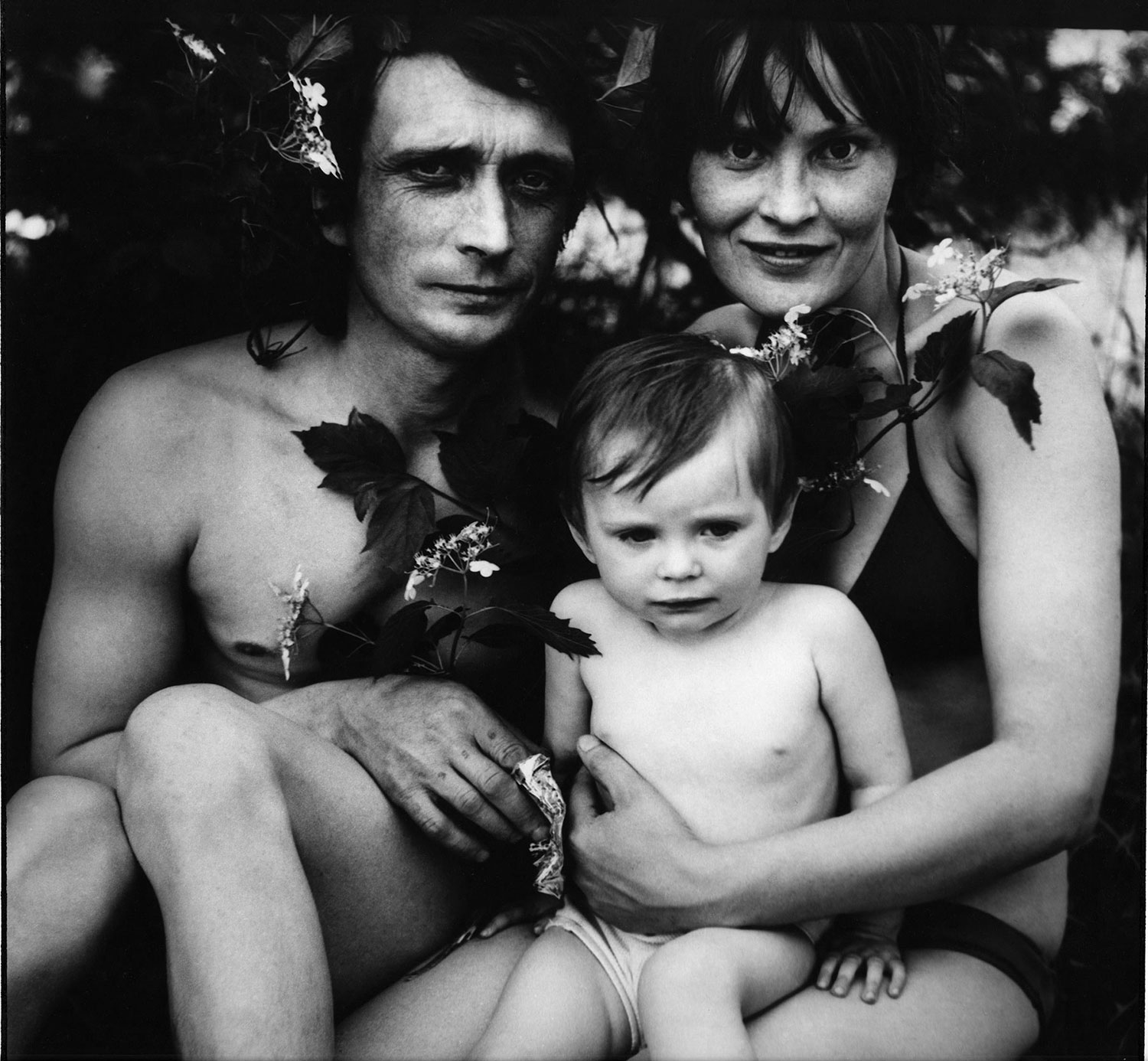
Daniel Byers: Can you talk about the idea of absence in your work? There are often gaps (which repeat as points in pattern), or larger removals, that allow raw canvas to act in the picture plane.
Zak Prekop: When the raw canvas shows through, the absence of paint has allowed that canvas to move forward visually, sending another element, like a color, backwards towards the wall. That kind of absence keeps the elements of the painting in flux, trading places and adjusting their apparent distance from a viewer. It’s a productive kind of absence.
DB: The most present phenomenon to me when I see your work is the confusion between surface, layers, front, back, subtraction and addition, which often result in seeming absences where there is actually overlap. How have you been physically making these recent works?
ZP: I start a lot of my paintings either by collaging shapes of paper on canvas or by applying paint directly to raw canvas with a pallet knife, usually with a single color in an incomplete or broken field. From there, the paintings diverge in various directions. In some recent works I’ve been flipping the paper collage over and re-stretching it so it’s visible through the canvas by transparency and as a kind of embossment in the surface. Some of these are left blank but others have painting on the surface, which brings forward forms from the collage behind the canvas, visually collapsing or weaving together the layers of paint, canvas and paper.

DB: I can tell that you take great care in making your work. It seems time passes as canvases might sit unattended, waiting for instruction. And then you follow through with procedures. This would seem to be an engaged, inquisitive method, but keeping expression at a certain remove. To what extent is the process and your decision-making procedure related to intuitive responses, and some desire to communicate anything inchoate, atmospheric, direct or otherwise?
ZP: Yes, I do work on a lot of paintings at once, doing something to one, then to another and coming back to it later, rather than staying with one painting until it’s resolved or interesting. I think of all the paintings as a whole, even if each one has to be dealt with and seen individually. I do consider the paintings expressive but not in the way one might associate with mark making. I think they express concentration, in that the time I spend looking at them and deciding what to do with them corresponds with the time someone else can spend looking at them, unraveling them.
DB: Do you think about painting’s potential for metaphor, or its possibly analogue relationship to ideas or actions beyond its making?
ZP: I want a kind of equivalency between myself and someone who looks at my paintings. There aren’t secrets. There may be questions about how and when things happened but they can be understood by looking. So the model of metaphor doesn’t work for them very well. I know the paintings are only this way because of my own character or the way that I interact with people. I’m very non-confrontational. Their analogue is me, and in that way, they are expressive.





